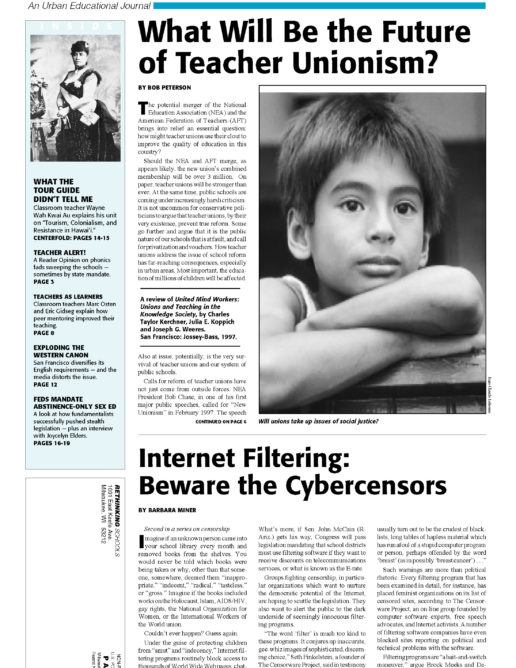Preview of Article:
What Will Be The Future of Teacher Unionism?
A review of United Mind Workers: Unions and Teaching in the Knowledge Society, by Charles Taylor Kerchner, Julia E. Koppich and Joseph G. Weeres. San Francisco: Jossey-Bass, 1997.
“Defining and measuring quality — for students, for teachers, for schools — is central to what unions need to do,” they argue.
The authors note that teachers are “unacknowledged experts” and know more about teaching and learning “than do governors, business leaders, and most college professors.” But, they argue, collective bargaining has only legitimated teachers’ economic interests and has never recognized them “as experts about learning.”
Kerchner and colleagues identify an underlying phenomenon that they say necessitates a new approach for teacher unionism — the shift from what they call an “industrial society” to a “knowledge society.” The authors also take up issues such as charters, privatization, and decentralization, implicitly underscoring the ideological shift away from centralized solutions towards local decision-making.
The book argues that teacher unions should focus organizing in three core areas:
- Quality of learning and teaching.
- School-based compacts.
- Teacher hiring and advancement.
Quality of learning and teaching. Unions should promote quality by becoming involved in rethinking teacher training and the teacher’s job responsibilities, creating standards for student performance, and implementing peer assistance and review programs. Specific suggestions range from having unions promote teacher-based curriculum committees to developing flexible work hours so teachers have more time to reflect and work together outside of the classroom. Kerchner and colleagues strongly support national standards — calling them necessary because they define the central mission of education. They believe that teacher unions should put considerable resources into creating “a system of indicators of school accountability at the national and state levels” and into training members “to gather and interpret indicator data at the local level.”</p

